Following the Links in T-S NS 192.11: A Qur’anic Exercise from a Cairene Public School
Nick Posegay, University of Cambridge
Introduction
No individual possesses the expertise required to understand every manuscript in the Genizah collections, so as researchers we must utilise all available resources to interpret what we find. Sometimes that means consulting long-forgotten tomes in the deepest vaults of the University Library, or squinting at microfilms that were surely cutting-edge at some point in the distant past. Other times we must travel to the far reaches of the globe, seeking aid abroad from generous colleagues and libraries with windows. In truly desperate times, we may even attempt to decipher the handwritten records of Goitein himself, eager for any overlooked philological detail amongst his nearly 30,000 individual notecards.
This is not one of those times. This time, our most helpful tools were Facebook and Google Maps. Without them, we might never have identified the original scribe of T-S NS 192.11: a young student at a Cairene public school at the end of the nineteenth century.
Taylor-Schechter New Series 192.11
T-S NS 192.11 is actually three fragments, catalogued as T-S NS 192.11A, T-S NS 192.11B, and T-S NS 192.11C (henceforth A, B, and C). They belong with T-S Ar.41.93, a partial leaf from the same manuscript,1 as well as T-S NS 306.145, which joins to T-S Ar.41.93.2 The paper was made with industrial machinery, and is more modern than most of the Cairo Genizah collection. A full leaf measures 23.3 x 16.9 cm.
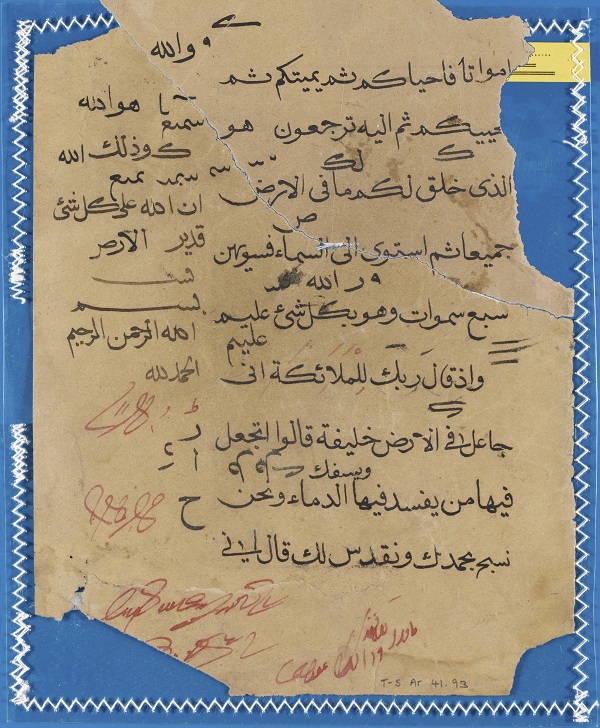
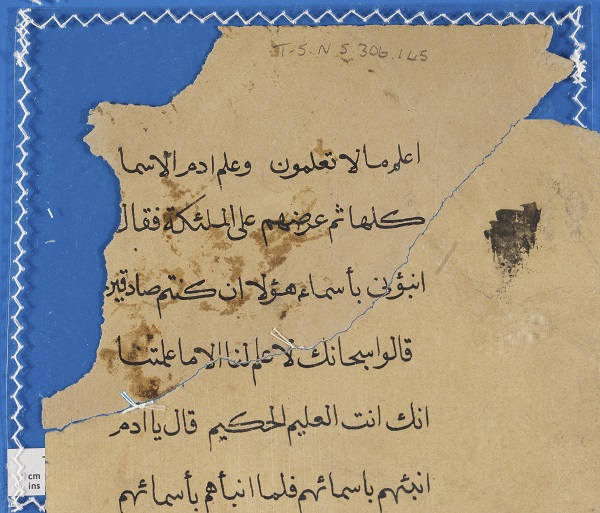
Together, these fragments make up four folios from al-Baqara (‘The Cow’), the second sūra of the Qurʾan. C includes verses 2:19-24; T-S Ar.41.93/T-S NS 306.145 includes 2:29-34; A includes 2:34-36; and B includes 2:34-41.
But how can this be? Why are fragments of an Islamic holy book in a collection of texts purportedly from a Jewish house of worship? There are two factors to consider:
First, the contents of this particular section of the Qurʾan may have influenced its storage in the Genizah. There are fragments from at least 23 Arabic-script Qurʾan manuscripts in Genizah collections around the world.3 Including T-S NS 192.11, 20 of these manuscripts reside in Cambridge. These fragments tend to contain sections of the Qurʾan that discuss Jews and biblical figures.4 T-S NS 192.11 is no exception, as verses 2:19-41 mention the kāfirūn (‘disbelievers;’ i.e. non-Muslims) (2:19-24); Adam and Satan (2:31-37); and the children of Israel (2:40). Is this a coincidence? Maybe. There are many references to biblical figures in the Qurʾan, and it would not be outlandish to select four folios at random with a similar concentration of biblical allusions.
Second, it is likely that not everything Schechter brought to Cambridge in 1897 was deliberately retired in the Ben Ezra Synagogue’s Genizah chamber. Rebecca Jefferson has highlighted the span from 1889 to 1892 as a particularly complicated period, when the Genizah chamber was emptied so the Synagogue could be rebuilt. The manuscripts were left in the general environs of the Synagogue, including in the courtyard, in rubbish mounds, or buried underground.5 We do not know how many additional manuscripts were added to these piles, and not all of the pre-1889 manuscripts were in the restored Genizah chamber when Schechter arrived.6 Some non-Jewish Cairenes in the Fustat area may well have discarded their own papers alongside this exposed Genizah, perhaps with T-S NS 192.11 among them.
A Qurʾanic Writing Exercise
Keen readers will have spotted that the contents of folio A overlap with the first three verses of B, such that both A and B should come immediately after T-S Ar.41.93 in the manuscript. However, each leaf also has a catchword, which indicates the first word on the leaf that ought to follow it. The final words on the last line of T-S Ar.41.93 verso are wa-idh qulnā (وإذ قلنا), and its catchword is lil-malāʾika (للملئكة):
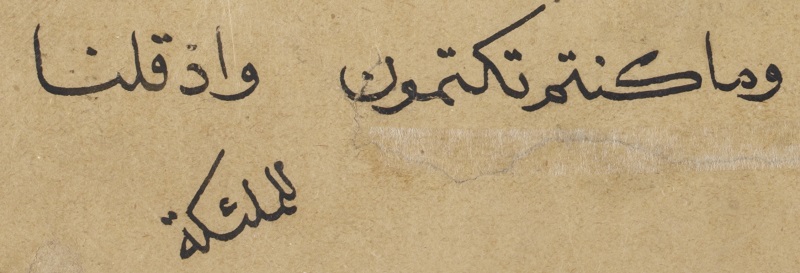
Fig. 3: T-S Ar.41.93 verso, line 9 and catchword
These words are part of verse 2:34 in the Qurʾan, and they indicate that the next leaf should continue that verse from the word lil-malāʾika. That is exactly what happens in the first line of A recto:

Fig. 4: T-S NS 192.11A recto, line 1
But B, which also contains 2:34, begins with the first words of the verse (wa-idh qulnā), which do not match the catchword from T-S Ar.41.93:

Fig. 5: T-S NS 192.11B recto, line 1
This discrepancy reveals that B was never meant to follow T-S Ar.41.93. Instead, it seems the four leaves of this text actually comprise parts of two drafts of the same section of al-Baqara. The earlier draft included T-S Ar.41.93, which leads directly into A, and the later draft included B and C.
These two drafts contain a number of features that suggest they were part of a writing exercise, likely done by a student learning the Qurʾan. For the initial draft, the writer skipped the laborious step of adding vowel signs to the text. By contrast, the final draft has been painstakingly vocalised:
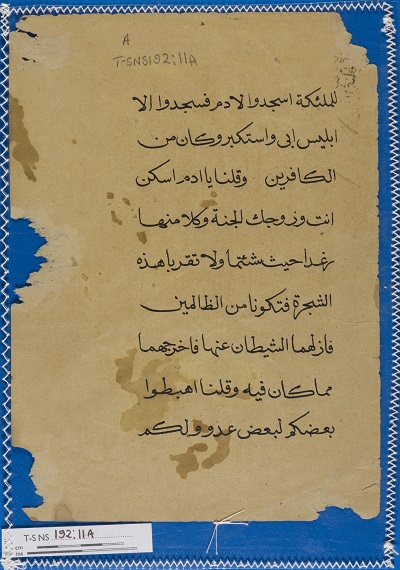
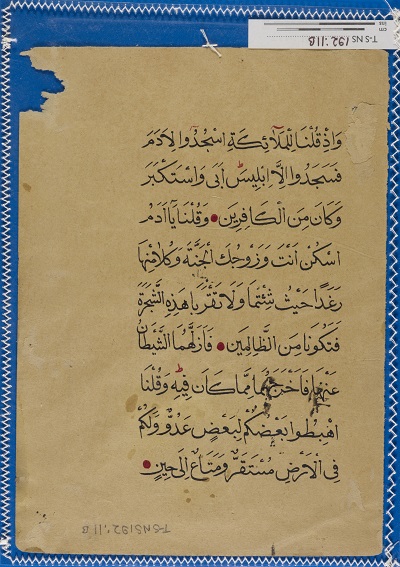
The only vocalised word in the initial draft is on T-S Ar.41.93 recto, where someone has added red vowel signs to the word lil-malāʾikati (لِلْمَلَائِكَةِ; ‘to the angels’):

Fig. 8: T-S Ar.41.93 recto, line 6
The student had particular trouble with this word. Not only is it vocalised here with different ink, but when it appears as the catchword of T-S Ar.41.93 and the first word of A recto, it does not match the orthography of the final draft:
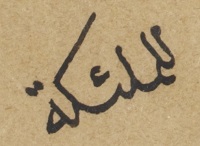
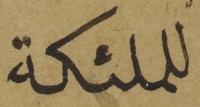
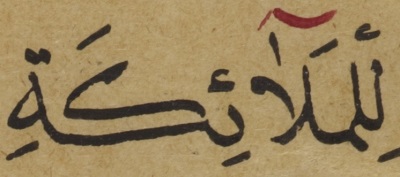
This confusion is not surprising, as the Classical Arabic word malāʾika (‘angels’) is often spelled without the letter alif, even though it has a long ā vowel. But note also the difference between the two drafts in the style of the medial kāf. The initial draft has the most common form of the letter, while the final draft is more calligraphic. T-S Ar.41.93/T-S NS 306.145 recto shows multiple places where the student practiced writing this more advanced form of kāf:
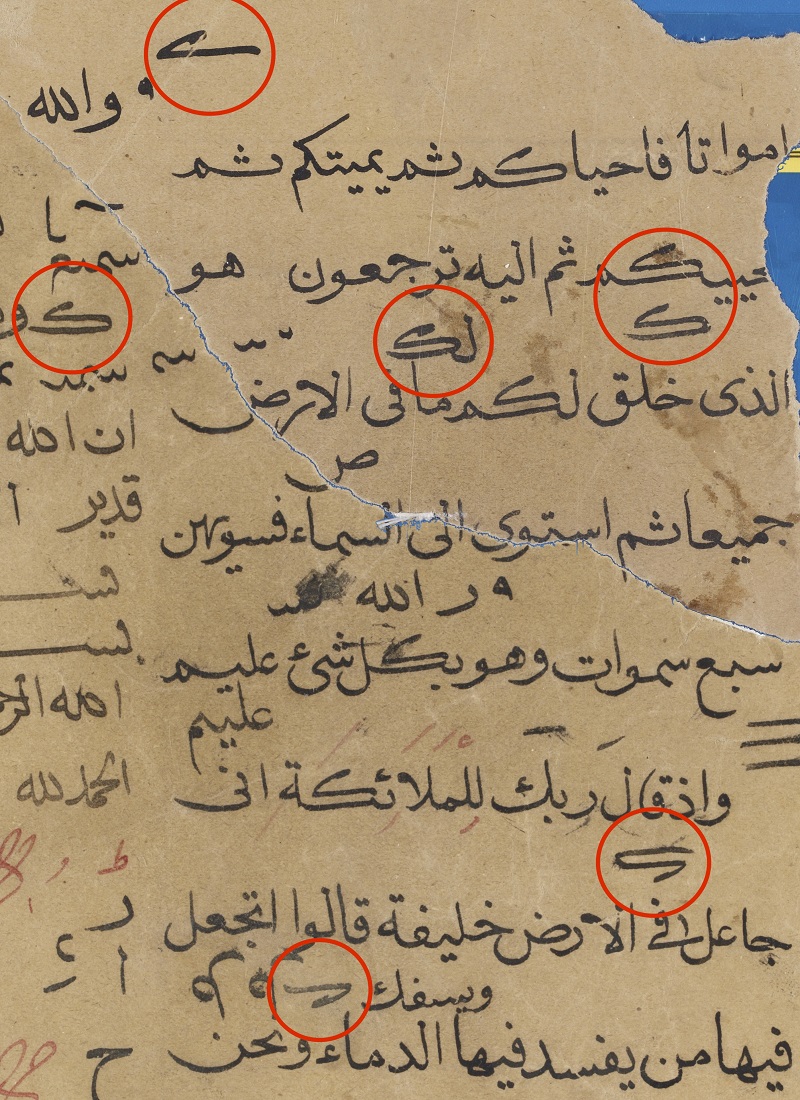
Fig. 12: T-S Ar.41.93/T-S NS 306.145 recto
This leaf also contains numerous practice attempts at key Arabic phrases, as well as corrections to the draft text:
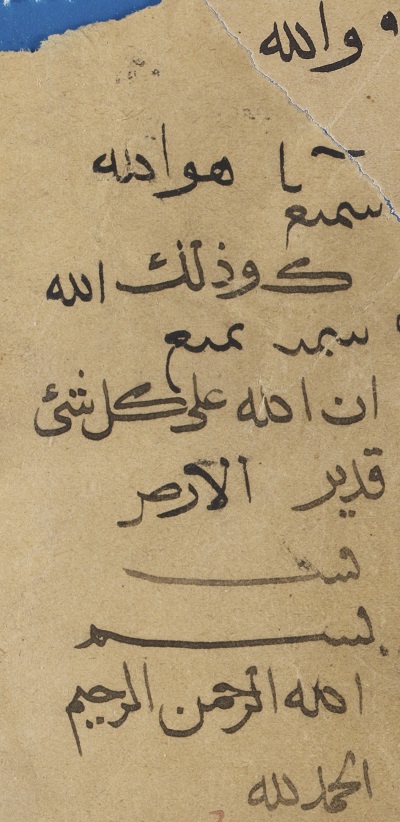
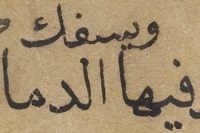
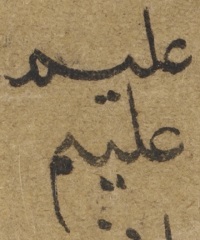
Fig. 15: Correction to the final form of mīm. T-S Ar.41.93 recto, line 5
Additionally, the red ink of the vowels on lil-malāʾikati matches several marginal notes that I have been unable to decipher. It is possible that not all of these notes are Arabic, but the similarity of their ink to the vowel signs suggests they do pertain to the Qur’anic text. They may be comments or corrections on the verses.
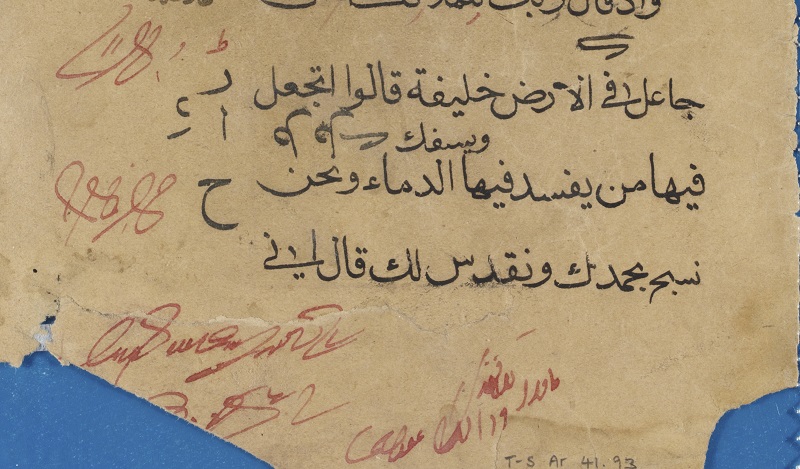
Fig. 16: Undeciphered notes on T-S Ar.41.93
Practice phrases and corrections do not appear in the final draft (B and C), but those leaves do show different stages of ‘completeness.’ Large red dots separate verses on both sides of B and the recto of C, but C verso has no such dividers. It is also missing a few diacritic signs,7 which are included on the other finalised pages in red ink. Furthermore, there is no evidence that these leaves were ever bound together. These details suggest that the final draft was not part of a manuscript intended for commercial sale.
Finally, B verso contains the end of verse 2:40, then a catchword noting that the next folio should begin from 2:41:
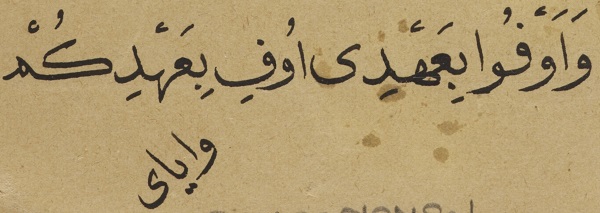
Fig. 17: T-S NS 192.11B verso, line 9 and catchword
However, instead of starting a new leaf, the student put verse 2:41 in the margin of the page. This verse has full vocalisation, and although it is smaller, it clearly belongs with the main text:

Figure 18: Verse 2:41 on T-S NS 192.11B verso, margin
If this manuscript was intended for sale or the writer intended to copy further past 2:40, then they would have started 2:41 on a new sheet of paper, following the indication of their own catchword. Apparently, they ignored that catchword and copied the next verse in the margin because they had no intention of writing beyond 2:41, and they did not want to use an entire new leaf for a single verse.
What seems to have happened is that a teacher assigned their student to copy part of al-Baqara from (at minimum) verse 2:19 up through 2:41. This student dutifully practiced their calligraphy, repeating key phrases (T-S Ar.41.93 margin) and writing a draft version of at least part of their assignment. They may even have taken comments and corrections from their teacher, as suggested by the red vocalisation and notes on T-S Ar.41.93 recto. Next, they re-copied the assignment based on their first draft, now including vocalisation and diacritics. When they completed the last line of B, they followed the standard convention of adding a catchword to link it to the next folio. However, at that point, they only had one verse left to copy, so they added it to the margin instead of using a new piece of paper.8
The School of Qarabiyya
For the vast majority of Genizah manuscripts, the story would end here, and we would be left with no further clues about who wrote this text. However, the student did not continue their initial draft on A verso. Instead, that page was used to write a colophon:
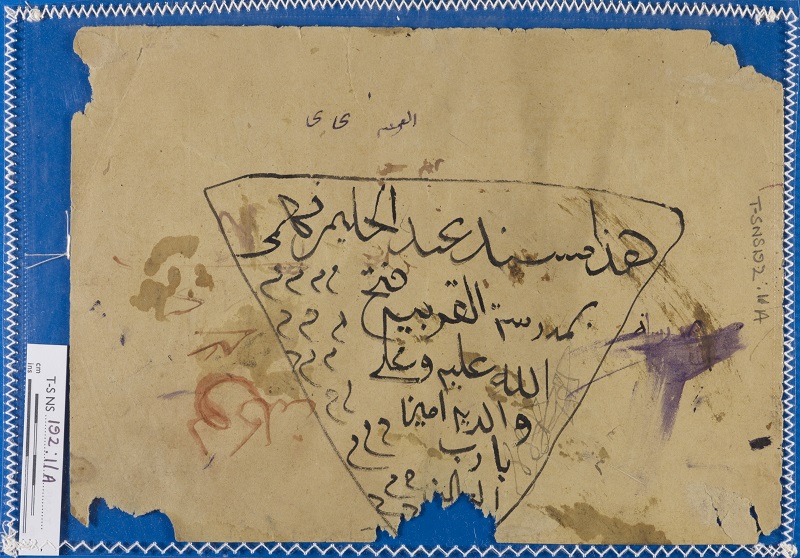
Figure 19: T-S NS 192.11A verso
This colophon seems like a draft version, written in a much messier script than the rest of the manuscript. It may be a different hand from that of the Qur’anic text. Possibly, once the student finished their final assignment, they discarded this draft folio, and another person wrote the colophon on the blank verso. Alternatively, the student may have relaxed and slipped into a more informal script style while writing a practice colophon that they knew their teacher would not see.
The text reads:
هذا مسند عبد الحليم فهمى
بمدرسة القربية فتح
الله عليه وعلى
والديه آمين
يارب
العالمين
This is the tradition of ʿAbd al-Ḥalīm Fahmī
at the school of Qarabiyya. May
God grant success to him
and his parents, amen.
O Lord
of the worlds.*
* Updated on 4 October 2020: Esteemed reader Haitham Mahmoud has noted this as the proper transcription of the colophon. A previous version of this post had the incorrect transcription:
هذا مسند عبد الحليم فهمى
بمدرسة القربية فتح
الله عليم وعلى
والذين امينا
يارب
العالمين
The text reveals that this manuscript was written in connection with madrasa al-Qarabiyya (‘the school of Qarabiyya’). Taking full advantage of the Genizah Research Unit’s state-of-the-art research technology, I googled that name. The top link was an Arabic Facebook page for a modern, all-boys middle school named Madrasa al-Qarabiyya, but surely – or so I thought – this could only be a coincidence. I plugged the school’s address into Google Maps, and found that it is just a 15-minute taxi ride away from the Ben Ezra Synagogue.
It turns out that several schools have been called ‘al-Qarabiyya’ in the last 150 years, all of them named after Cairo’s Qarabiyya neighbourhood. The first such school – and one of only two before Schechter arrived in 1897 – was a government-sponsored primary school for boys.9 Founded in 1872, this original Madrasa al-Qarabiyya was one of the first public schools in Egypt. It operated regularly from 1872 until at least 1914, well after Schechter emptied the Ben Ezra genizah in 1897.
The second Madrasa al-Qarabiyya was founded in 1875 as a primary school for girls.10 It was only the second public school for Egyptian girls, and it was the first of its kind for lower-class families. It was the sister to another school, known as al-Suyufiyya, which Hoda Yousef describes in Composing Egypt:
In its original incarnation, the school had the ambitious goal to teach ‘all the subjects that are beneficial for women.’ Initially, al-Suyufiyya teachers primarily taught the Qurʾan and sewing, but as an indication of the school’s appeal to the Egyptian elite, both Turkish and piano lessons were added a year later. After a few years of initial success and of enrollment reaching well over three hundred, a second school, al-Qarabiyya, was opened, intended as a ‘lower class’ version of al-Suyufiyya.11
The girls’ Qarabiyya school only operated until 1879, when financial issues prompted it to merge with al-Suyufiyya.12 Upper-class Suyufiyya families quickly extracted their daughters from among the perceived riff-raff of Qarabiyya, and enrolment shrank to a just few dozen students – mostly deaf, blind, or destitute – by the late 1880s. Then in 1889, the Egyptian government revived the school under a new name, calling it al-Saniyya,13 which continued until at least 1914.
What we seem to have in T-S NS 192.11 is a Qur’anic writing exercise produced by a student from one of these two Qarabiyya schools. If that same student also wrote the colophon, then they seem to give credit for their work to the instruction of a man named ʿAbd al-Ḥalīm Fahmī, possibly their teacher. On the other hand, if ʿAbd al-Ḥalīm wrote the colophon, then he had no qualms about crediting his own teaching for the quality of this student’s calligraphy. Moreover, if this ʿAbd al-Ḥalīm was indeed a teacher at al-Qarabiyya, then it was almost certainly at the boys’ school.
Conclusion
T-S NS 192.11 is a Qur’anic writing exercise, including part of a rough draft and part of a final draft for the same section of al-Baqara. A student from a Cairene public school called al-Qarabiyya wrote this exercise between 1872 and 1897. This student was between five and fourteen years old, and most likely attended the all-boys primary school of al-Qarabiyya. He completed the exercise based on instruction from his teacher, possibly a man named ʿAbd al-Ḥalīm Fahmī, and then either he or ʿAbd al-Ḥalīm wrote a colophon identifying their school on the back of a draft folio.
This Qurʾan manuscript eventually ended up in the Taylor-Schechter Genizah Collection. Presumably, it was placed in the Ben Ezra Synagogue’s Genizah chamber prior to Schechter’s visit in 1897. However, it may have first landed on an exposed heap of Jewish documents when the Synagogue was emptied for reconstruction in 1889, and then it returned with those documents to the refurbished Genizah chamber in 1892. In any case, it was likely among the last manuscripts added before Schechter came to spirit them all away. Schechter could not have known, but as he was packing up his precious fragments of Maimonides and Ben Sira, he was also gathering the careful schoolwork of a young Muslim student who lived just a few streets away.
Footnotes
1 This connection was identified with the help of my colleagues, Magdalen Connolly and Estara Arrant. See Magdalen M. Connolly and Nick Posegay, “‘An Arabic Qurʾān, that you might understand’: Qurʾān Fragments in the T-S Arabic Cairo Genizah Collection,” Journal of Islamic Manuscripts, forthcoming.
2 That’s right, it’s a 5-for-1 this month. That’s how much I care about you, the reader.
3 Posegay and Connolly, “Untitled Personal Qur’ans Article,” forthcoming.
4 Connolly and Posegay, “‘An Arabic Qurʾān, that you might understand’: Qurʾān Fragments in the T-S Arabic Cairo Genizah collection.”
5 Rebecca J.W. Jefferson, “Deconstructing ‘the Cairo Genizah’: A Fresh Look at Genizah Manuscript Discoveries in Cairo before 1897,” Jewish Quarterly Review 108, no. 4 (2018): 441–43.
6 Jefferson notes that ‘many thousands’ of manuscripts had been sold by the Ben Ezra community between 1889 and 1892 (Jefferson, 444), and more continued to be sold after the new Genizah chamber was completed. Among these was the Ben Sira manuscript that Agnes Smith Lewis and Margaret Dunlop Gibson purchased in 1896, which tipped off Schechter to the importance of the Genizah.
7 Specifically, there is no madda on the alif of شهداءكم (Qurʾan 2:23) in line 6.
8 Presumably they then called someone on a payphone or something. You know, whatever kids did in the past.
9 Amin Sami, Al-Taʿlīm Fī Miṣr Fī Sanatayn 1914 Wa-1915 (Cairo, 1917), 25.
10 Sami, 30.
11 Hoda A. Yousef, Composing Egypt: Reading, Writing, and the Emergence of a Modern Nation 1870-1930 (Stanford: Stanford University Press, 2016), 55.
12 The Qarabiyya name was not used for this school after 1879. Yousef, 55; Sami, Al-Taʿlīm Fī Miṣr Fī Sanatayn 1914 Wa-1915, appendix 3, 89.
13 Yousef, Composing Egypt, 55.
Cite this article
Posegay, N. (2020). Following the Links in T-S NS 192.11: A Qur’anic Exercise from a Cairene Public School. [Genizah Research Unit, Fragment of the Month, January 2020]. https://doi.org/10.17863/CAM.65165
If you enjoyed this Fragment of the Month, you can find others here.
Contact us: genizah@lib.cam.ac.uk
The manuscripts in this article are included in the Cambridge Digital Library. To see these and other items visit: https://cudl.lib.cam.ac.uk/
